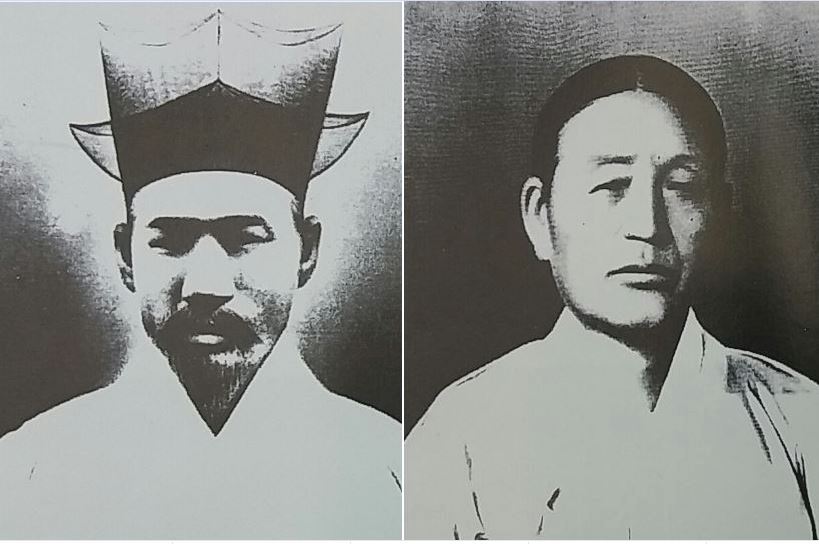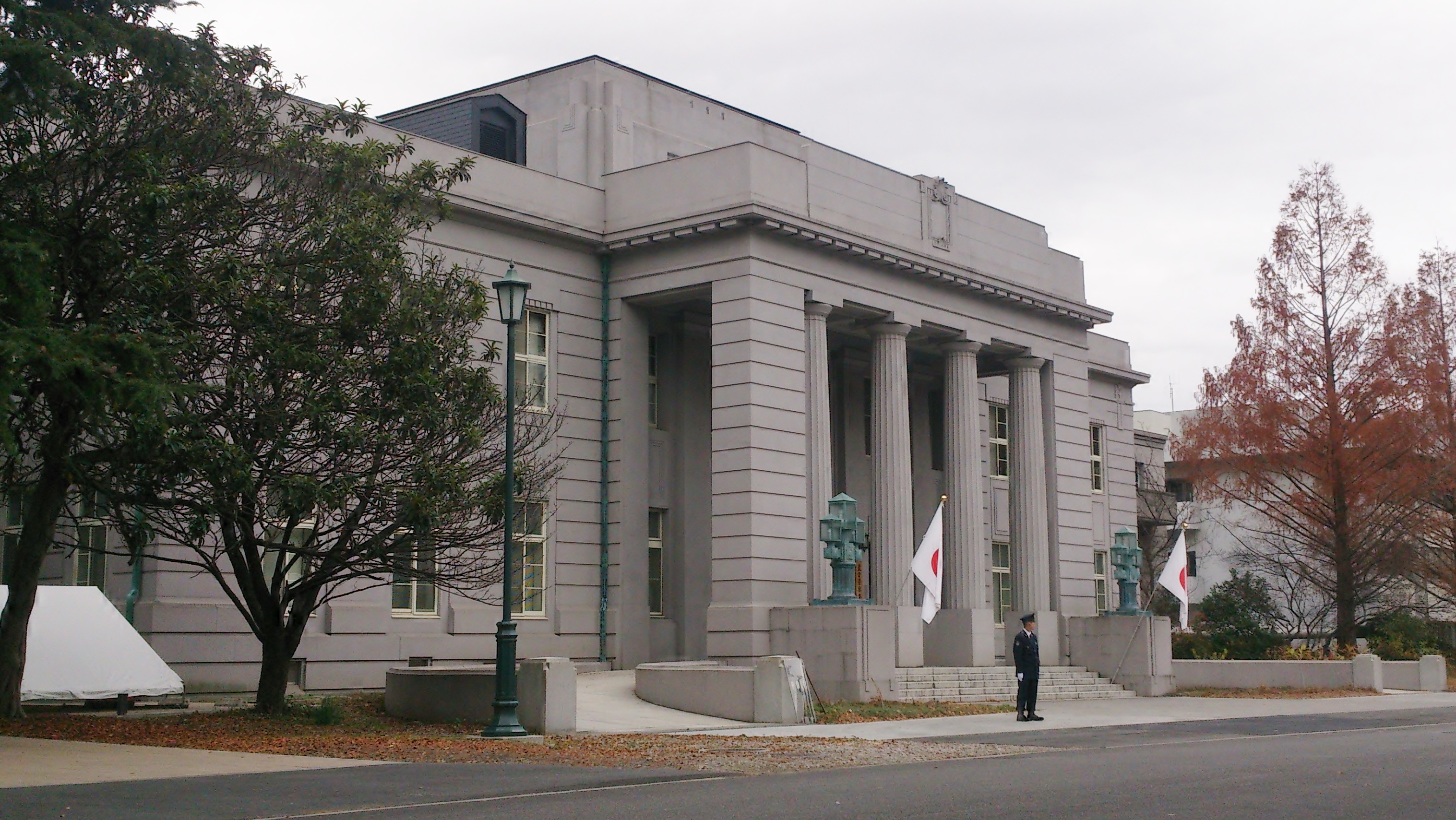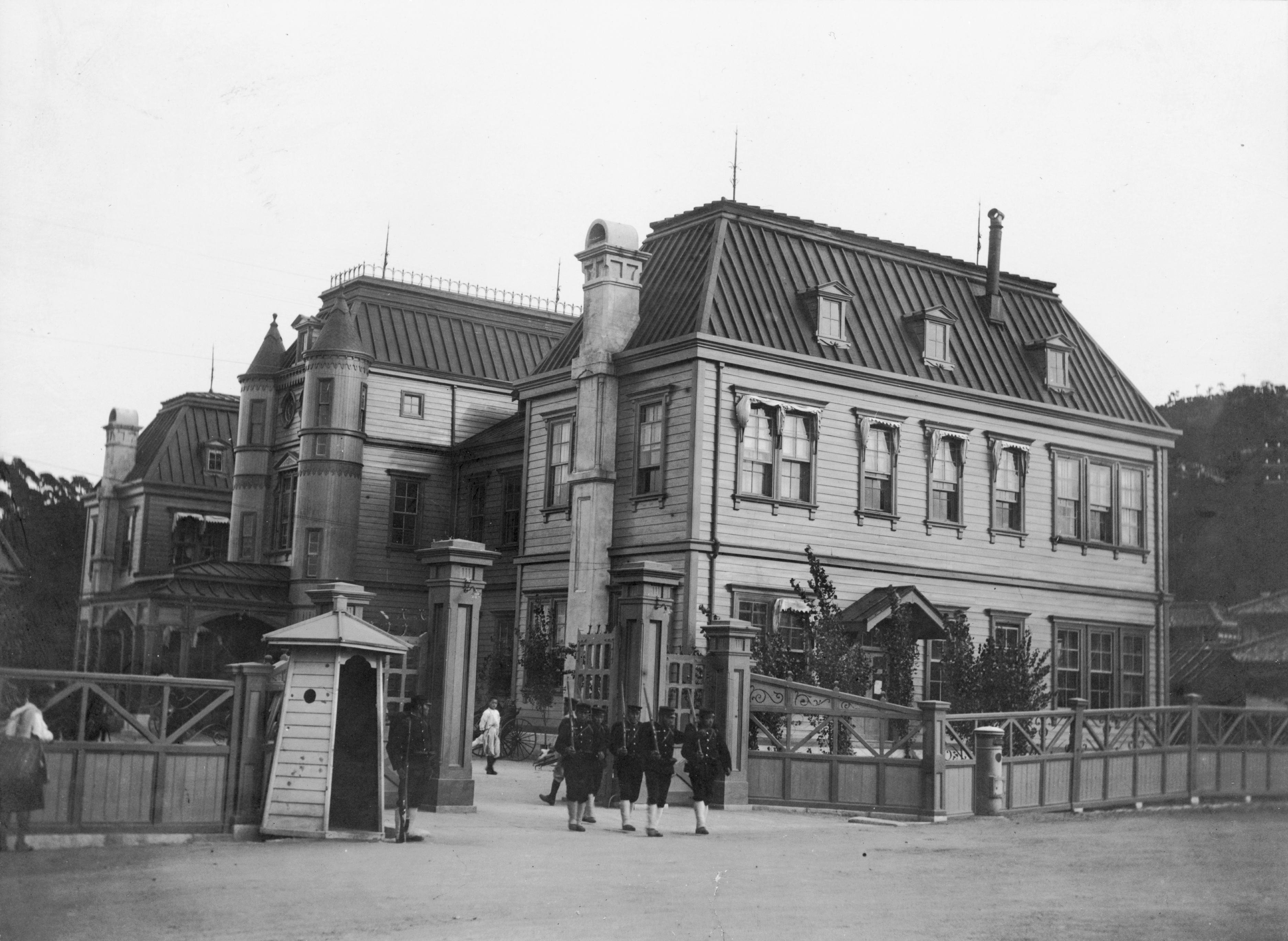|
Ahn Joong-Gun
Ahn Jung-geun, sometimes spelled Ahn Joong-keun (; 2 September 1879 – 26 March 1910; baptismal name: Thomas Ahn ), was a Korean-independence activist, nationalist, and pan-Asianist. He is famous for assassination of Itō Hirobumi, the first Prime Minister of Japan. On 26 October 1909, he assassinated Prince Itō Hirobumi, a four-time Prime Minister of Japan, former Resident-General of Korea, and then President of the Privy Council of Japan, following the signing of the Eulsa Treaty, with Korea on the verge of annexation by Japan. He was imprisoned and later executed by Japanese authorities on 26 March 1910. Ahn was posthumously awarded the Order of Merit for National Foundation in 1962 by the South Korean government, the most prestigious civil decoration in the Republic of Korea, for his efforts for Korean independence. Biography Early accounts Ahn was born on 2 September 1879, in Haeju, Hwanghae Province, the first son of Ahn Taehun (안태훈; 安泰勳) and Cho Mari ... [...More Info...] [...Related Items...] OR: [Wikipedia] [Google] [Baidu] |
Ahn (Korean Surname)
Ahn, also romanized An, is a Korean family name. 109 Korean clans are named 'Ahn', but with different origins. In 2000, there were 637,786 people bearing this surname in South Korea, making it the 20th most common family name in the country, with roughly 2% of the country's population. North Korea does not release figures for surnames, but the percentage is expected to be more than in South Korea. Clan In the traditional Korean clan system, which is still the basis of family registry in South Korea, each clan is distinguished by its ''bon-gwan'', the notional ancestral seat of the clan. Typically each clan claims a different person as its founder, although there are exceptions. 109 Ahn clans are extant today. However, most of these are very small. The majority of Ahns claim membership in the Sunheung Ahn clan (the highest and most noble clan of Ahns with the most well-known "blue-blood" status), also called An clan of Sunheung. The Kwangju and Juksan clans are also quite large and ... [...More Info...] [...Related Items...] OR: [Wikipedia] [Google] [Baidu] |
Order Of Merit For National Foundation
The Order of Merit for National Foundation (Hangul: 건국훈장) is one of South Korea's orders of merit. It is awarded by the President of South Korea for "outstanding meritorious services in the interest of founding or laying a foundation for the Republic of Korea." The Order was originally established under a slightly different name 건국공로훈장 (建國功勞勳章) by Presidential Decree #82, on Apr. 27, 1949, and is the oldest Order of the Republic of Korea. On January 16, 1967, there were major changes made to the Order of National Foundation under Presidential Decree #2929. The name of the Order was shortened from 건국공로훈장 (建國功勞勳章) to 건국훈장 (建國勳章), and all three classes got new names and designs. Grades The Order of Merit for National Foundation is awarded in five grades. Recipients By 2005 about 8,000 people had received the Order. Many of its recipients have only been awarded the Order posthumously, often because they die ... [...More Info...] [...Related Items...] OR: [Wikipedia] [Google] [Baidu] |
Privy Council Of Japan
The was an privy council, advisory council to the Emperor of Japan that operated from 1888 to 1947. It was largely used to limit the power of the National Diet#History, Imperial Diet. Functions Modeled in part upon the Privy Council of the United Kingdom, this body advised the Japanese Empire on matters including, but not limited to: * Proposed amendments to the Constitution of the Empire of Japan * Proposed amendments to the 1889 Imperial Household Law * Matters of constitutional interpretation, proposed laws, and ordinances * Proclamations of martial law or declaration of war * Treaties and other international agreements * Matters concerning the succession to the throne * Declarations of a regency under the Imperial Household Law; * Matters submitted by the Emperor directly The Privy Council had both judicial functions and certain executive functions. However, the council had no power to initiate legislation. Establishment To oversee new governmental developments, in 1871 ... [...More Info...] [...Related Items...] OR: [Wikipedia] [Google] [Baidu] |
Resident-General Of Korea
The Japanese resident-general of Korea ( ja, 韓国統監, Kankokutōkan; ko, 일본의 대 한국통감, Ilbon-ui dae hangugtong-gam) was the leader of Korea under Japanese rule from 1905 to 1910. This post was highly hated among native Koreans, and international opinion regarded it as nothing more than an imperial sanction to ward off the imperial interests of China, Russia, and the Western Powers (collectively: Britain, France, and the United States). List of Japanese residents-general See also * Governor-General of Korea * Governor-General of Taiwan The governor-general of Taiwan ( ja, 臺灣總督, Taiwan Sōtoku) was the head of the Government-General of Taiwan in the Japanese era (including Formosa and the Pescadores) when they were part of the Empire of Japan, from 1895 to 1945. The ... References {{Japan-hist-stub ... [...More Info...] [...Related Items...] OR: [Wikipedia] [Google] [Baidu] |
Prince
A prince is a male ruler (ranked below a king, grand prince, and grand duke) or a male member of a monarch's or former monarch's family. ''Prince'' is also a title of nobility (often highest), often hereditary, in some European states. The female equivalent is a princess. The English word derives, via the French word ''prince'', from the Latin noun , from (first) and (head), meaning "the first, foremost, the chief, most distinguished, noble ruler, prince". Historical background The Latin word (older Latin *prīsmo-kaps, literally "the one who takes the first lace/position), became the usual title of the informal leader of the Roman senate some centuries before the transition to empire, the '' princeps senatus''. Emperor Augustus established the formal position of monarch on the basis of principate, not dominion. He also tasked his grandsons as summer rulers of the city when most of the government were on holiday in the country or attending religious rituals, and, ... [...More Info...] [...Related Items...] OR: [Wikipedia] [Google] [Baidu] |
Prime Minister Of Japan
The prime minister of Japan (Japanese: 内閣総理大臣, Hepburn: ''Naikaku Sōri-Daijin'') is the head of government of Japan. The prime minister chairs the Cabinet of Japan and has the ability to select and dismiss its Ministers of State. The prime minister also serves as the civilian commander-in-chief of the Japan Self Defence Forces and as a sitting member of the House of Representatives. The individual is appointed by the emperor of Japan after being nominated by the National Diet and must retain the nomination of the lower house and answer to parliament to remain in office. The position and nature of this title allow the holder to reside in and work at the Prime Minister's Official Residence in Nagatacho, Chiyoda, Tokyo, close to the National Diet Building. Fumio Kishida is the current prime minister of Japan, replacing Yoshihide Suga on 4 October 2021. As of , there have been 102 prime ministers. Designation Abbreviations In Japanese, due to the special ... [...More Info...] [...Related Items...] OR: [Wikipedia] [Google] [Baidu] |
Pan-Asianist
Satellite photograph of Asia in orthographic projection. Pan-Asianism (''also known as Asianism or Greater Asianism'') is an ideology aimed at creating a political and economic unity among Asian peoples. Various theories and movements of Pan-Asianism have been proposed, particularly from East, South and Southeast Asia. The motive for the movement was the values of Western imperialism and colonialism, and that Asian values preceded European values. Japanese Asianism Pre-World War II Japanese Pan-Asianism was, at its core, the idea that Asia should unite against European imperialism. Japanese Asianism developed in intertwining among debates on solidarity with Asian nations who were under pressure of Europe and on aggressive expansion to the Asian continent. The former debates originated from liberalism. Their ideologues were Tokichi Tarui (1850–1922) who argued for equal Japan-Korea unionization for cooperative defence against the European powers, and Kentaro Oi (1843–1922) w ... [...More Info...] [...Related Items...] OR: [Wikipedia] [Google] [Baidu] |
Korean Nationalism
Korean nationalism can be viewed in two different contexts. One encompasses various movements throughout history to maintain a Korean cultural identity, history, and ethnicity (or "race"). This ethnic nationalism was mainly forged in opposition to foreign incursion and rule. The second context encompasses how Korean nationalism changed after the partition in 1945. Today, the former tends to predominate. The term "pure blood" refers to the belief that Korean people are a pure race descended from a single ancestor. Invoked during the period of resistance to colonial rule, the idea gave Koreans a sense of ethnic homogeneity and national pride, and a potential catalyst for racial discrimination and prejudice. The dominant strand of nationalism in South Korea, tends to be romantic in nature (specifically ethnic or "racial"), rather than civic. This form of romantic nationalism often competes with and weakens the more formal and structured civic national identity. South Koreans' l ... [...More Info...] [...Related Items...] OR: [Wikipedia] [Google] [Baidu] |
Korean Independence Movement
The Korean independence movement was a military and diplomatic campaign to achieve the independence of Korea from Japan. After the Japanese annexation of Korea in 1910, Korea's domestic resistance peaked in the March 1st Movement of 1919, which was crushed and sent Korean leaders to flee into China. In China, Korean independence activists built ties with the National Government of the Republic of China which supported the Provisional Government of the Republic of Korea (KPG), as a government in exile. At the same time, the Korean Liberation Army, which operated under the Chinese National Military Council and then the KPG, led attacks against Japan. After the outbreak of the Pacific War in 1941, China became one of the Allies of World War II. In the Second Sino-Japanese War, China attempted to use this influence to assert Allied recognition of the KPG. However, the United States was skeptical of Korean unity and readiness for independence, preferring an international trusteeshi ... [...More Info...] [...Related Items...] OR: [Wikipedia] [Google] [Baidu] |
Harbin
Harbin (; mnc, , v=Halbin; ) is a sub-provincial city and the provincial capital and the largest city of Heilongjiang province, People's Republic of China, as well as the second largest city by urban population after Shenyang and largest city by metropolitan population (urban and rural together) in Northeast China. Harbin has direct jurisdiction over nine metropolitan districts, two county-level cities and seven counties, and is the eighth most populous Chinese city according to the 2020 census. The built-up area of Harbin (which consists of all districts except Shuangcheng and Acheng) had 5,841,929 inhabitants, while the total metropolitan population was up to 10,009,854, making it one of the 50 largest urban areas in the world. Harbin, whose name was originally a Manchu word meaning "a place for drying fishing nets", grew from a small rural settlement on the Songhua River to become one of the largest cities in Northeast China. Founded in 1898 with the coming of the C ... [...More Info...] [...Related Items...] OR: [Wikipedia] [Google] [Baidu] |
South Korea
South Korea, officially the Republic of Korea (ROK), is a country in East Asia, constituting the southern part of the Korea, Korean Peninsula and sharing a Korean Demilitarized Zone, land border with North Korea. Its western border is formed by the Yellow Sea, while its eastern border is defined by the Sea of Japan. South Korea claims to be the sole legitimate government of the entire peninsula and List of islands of South Korea, adjacent islands. It has a Demographics of South Korea, population of 51.75 million, of which roughly half live in the Seoul Capital Area, the List of metropolitan areas by population, fourth most populous metropolitan area in the world. Other major cities include Incheon, Busan, and Daegu. The Korean Peninsula was inhabited as early as the Lower Paleolithic period. Its Gojoseon, first kingdom was noted in Chinese records in the early 7th century BCE. Following the unification of the Three Kingdoms of Korea into Unified Silla, Silla and Balhae in the ... [...More Info...] [...Related Items...] OR: [Wikipedia] [Google] [Baidu] |

.jpg)






